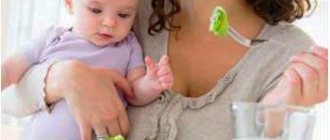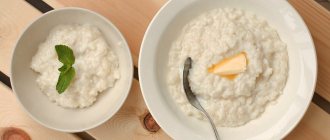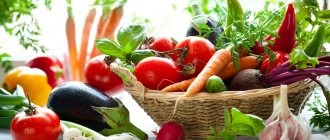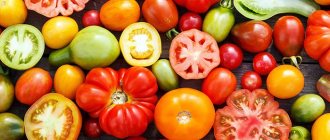Author:
gastroenterologist Anton Smirnov
4 minutes
3943
During breastfeeding, a woman may feel hungry much more often and stronger than usual, and this is normal. The process of making breast milk in the body increases daily energy requirements by about 500 calories. There is also an increased need for specific nutrients such as protein, vitamins D, A, E, C and B12, selenium and zinc.
Here are some healthy and tasty foods that you should include in your diet while breastfeeding, provided that you have no contraindications to them:
- Fish and seafood: salmon, seaweed, shellfish, sardines;
- Meat and poultry: chicken, beef, lamb, pork, liver;
- Fruits and vegetables: berries, tomatoes, sweet peppers, kale, garlic, broccoli;
- Nuts and seeds: almonds, walnuts, chia, flax and hemp seeds;
- Healthy fats: avocado, olive oil, coconut, eggs, full-fat yogurt;
- Fiber-rich starches: potatoes, butternut squash, sweet potatoes, beans, lentils, oats, quinoa, buckwheat. Note that it is recommended to introduce legumes into your diet no earlier than the baby turns three months old in order to avoid problems with excess gas formation;
- Other foods: tofu, dark chocolate, kimchi, sauerkraut.
It is also worth minimizing your consumption of fast food and sugary breakfast cereals, which can be replaced with muesli and granola, for example.
First feeding: how to put a baby to the breast?
Ideally, the first feeding occurs immediately after birth and lasts no more than 1-2 minutes. This process can be called feeding very conditionally - a child who has just been born does not feel hungry. Other factors are important here:
- emotional contact between mother and newborn: it will help the baby cope with its first stress, and in the mother it will stimulate the production of the hormone oxytocin, which is responsible for successful lactation;
- immune protection: the first feeding of an infant with colostrum, which contains a huge amount of antibodies, allows the baby to gain reliable protection against infections;
- colonization of the intestines with lactic acid microflora - bacteria enter the child’s gastrointestinal tract from the same colostrum.
The situation looks somewhat different when childbirth takes place by caesarean section. In most domestic maternity hospitals, the baby can be given to the mother only on the second day after birth. However, there is no need to be afraid of this: the claim that such practices can affect the ability to breastfeed is nothing more than a myth, and here’s why.
Firstly, a delay in the onset of lactation after a CS is quite common. Milk may appear 3-5 days after surgery. That is, breastfeeding the baby will still not work.
Secondly, the mother receives a short time-out, allowing her to recover from the effects of anesthesia and cope with the acute period of postoperative pain.
On the first day of breastfeeding, it is important to learn how to breastfeed your newborn correctly. The baby should grasp not only the nipple, but also the areola, his lips should be slightly turned outward, and his nose should rest against the chest above the nipple. Natural feeding specialists, either at hospitals or invited from outside, can help in this matter. They will tell you in detail and show you how to put your baby to the breast and check that the feeding is correct.
Recipes with turnips for nursing
- A light salad suitable as an appetizer, snack or dinner. Wash and peel the turnips well, cut into circles or cubes. Place the vegetable in boiling, lightly salted water and cook for 15-20 minutes. Drizzle the finished turnips with olive oil and the juice of half a lemon. Add salt and stir;
- Millet porridge with turnips is a hearty option for breakfast. Pour a glass of millet cereal into a glass of water and bring to a boil. Peel the vegetable and cut into cubes, add to the porridge. Cook for ten minutes, then lightly salt and pour in a glass of milk. Cook for another 15 minutes. You can add butter, sugar, dried fruits to the finished porridge;
- Baked dessert with apple and turnip is a great way for a nursing mother to enjoy it safely. Take half an apple and half a turnip, peel and cut into thin slices. Place on a baking sheet, alternating and overlapping. Sprinkle lemon juice on top and sprinkle with sugar. Bake for 10-15 minutes at 180 degrees. Apples are the healthiest and safest fruit, which is recommended for nursing mothers already in the first week of lactation. Applesauce is also allowed for the first feeding of an infant;
- Baked turnips will be an excellent side dish for meat or fish. Peel the vegetable and place it whole in a baking dish. Pour half a glass of water and bake until soft for 10-15 minutes. When the turnips have cooled, cut into slices, pour in vegetable oil and sprinkle chopped fresh herbs on top;
- Turnip gratin will diversify the family's diet and become an interesting, tasty and satisfying dish. Boil chicken broth, grate the cheese, peel and chop two cloves of garlic. Peel three or four turnips and cut them thinly, place them in the first layer in a baking dish, previously greased with butter. Place cheese on top, pour a small amount of cream and broth, salt and pepper, repeat layers. Add garlic on top and bake at 180 degrees for twenty minutes.
Cracks, congestion and decantation: three important issues during breastfeeding
The process of establishing guards rarely goes without complications. The first of these is cracked nipples, which cause a woman considerable discomfort. As a rule, this problem worries young mothers precisely in the first days or weeks of feeding, while the skin on the nipple is not sufficiently roughened. In such cases, ointments and gels with lanolin or vitamin B help. In extreme cases, you can use a nipple shield - but very limitedly and for a very short time, since the shields significantly reduce the volume of lactation and in the first days this can cause its complete cessation.
The second problem is milk stagnation. This happens if too much milk comes in in the first days, and the baby, for one reason or another, does not eat very actively. Signs that stagnation has occurred are a swollen, hard, painful and hot gland. To avoid this, it is recommended to include a limited amount of liquid in your breastfeeding diet during the first month. And if there is already a problem, actively express excess milk manually or using a breast pump.
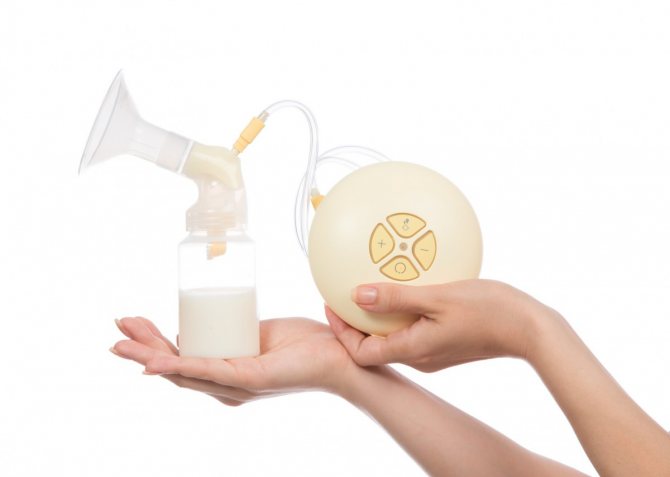
Composition and varieties of turnips
Turnip contains vitamin A, C, E and PP, B vitamins. The vegetable contains iodine and sodium, magnesium and phosphorus, zinc and iron, manganese. The most common are yellow turnips with juicy white flesh. It has a high content of healthy oils and beta-carotene, which has a positive effect on the condition of hair, skin and nails.
White varieties, which contain a large amount of fiber, cleanse the body, improve bowel movements and eliminate constipation, improve the functioning of the intestines and digestion. Black vegetables with dark, black or purple skin are considered the healthiest. They contain a complete set of vitamins and nutrients and effectively help in treating the throat.
Turnip is a nutritious and low-calorie product that is included in the diet menu. There are only 30 kcal per 100 grams, which allows you to lose excess weight. Regardless of the type and variety, the vegetable fills the body with necessary and important elements, strengthens and improves the immune system, and effectively resists viruses and infections. Turnips have a positive effect on digestion and prevent many diseases.

Bottles and pacifiers: necessary or not?
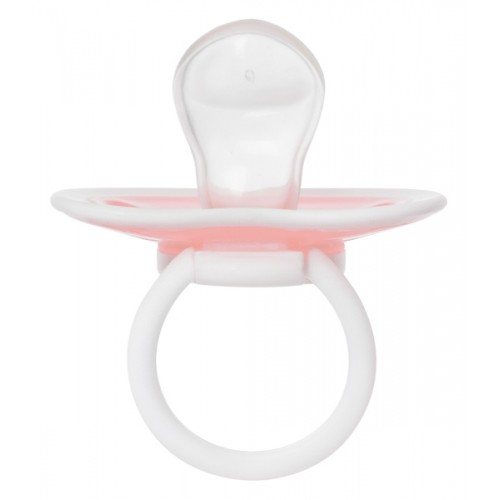
True, this hypothesis does not explain in any way why a similar pattern of behavior is demonstrated by infants sucking pacifiers from which food does not come. In fact, newborns suck the bottle and pacifier differently than the breast - without the participation of the tongue. And when you receive a breast mixed with a pacifier, you simply get lost. Often such feedings turn out to be, firstly, painful for the mother, and secondly, not very effective for the baby. Therefore, using pacifiers and pacifiers when breastfeeding for 1 month is extremely undesirable.
What foods are not recommended when breastfeeding?
If you eat some foods in moderation, they will not cause any harm.
For example, although sweet pastries are excluded during the diet, a small amount of them will not affect the child’s health. However, there is a list of products, even of good quality, that can harm a baby more than fast food. Harmful substances can enter the baby’s body through milk, so you need to know which foods should be excluded from the diet:
- Fatty fish (tuna, mackerel, sardines, trout) can contain substances hazardous to health.
- Caffeine and caffeine-containing drinks - tea, coffee, chocolate, some cold medications, energy drinks.
- Alcohol. It is absorbed into milk, even if the mother has taken a small amount.
- Nicotine is also transmitted to the baby through milk and negatively affects the baby’s immunity.
Nutrition in the first months of breastfeeding: what and how to eat for mom
During the period of lactation and the baby’s adaptation to food, the requirements for the mother’s diet are especially strict. This in no way implies fasting: for example, boiled or stewed vegetables, lean meat, soups and cereals during breastfeeding in the first month can be eaten in unlimited quantities, as well as bread, crispbread or dry biscuits. Natural high-quality fermented milk products and egg whites are allowed. Thus, soups, cereals, as well as cookies, eggs, cottage cheese, walnuts, and milk during breastfeeding in the first month may well become the correct basis for a woman’s diet.
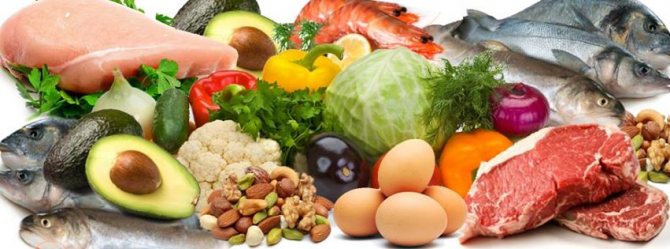
You can gradually add fruits and berries, while avoiding red and citrus fruits. For example, green and yellow apples, pears, melons, watermelons, persimmons and bananas during breastfeeding in the first month are not only allowed, but also encouraged. Gradually, the “fruit and berry” share can be increased to a quarter of the diet, especially in the summer season.
The issue of seeds deserves special attention. Sunflower, pumpkin and sesame seeds are a storehouse of useful microelements; moreover, they allow you to saturate your diet with “good” fats and promote lactation. The restriction on a woman’s consumption of seeds while breastfeeding in the first month is the baby’s individual intolerance to them. You should also carefully peel them and not eat them salted.
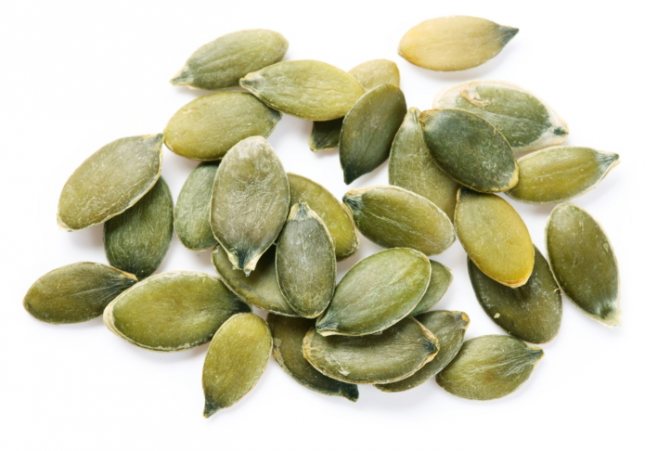
But even if the baby tolerates the seeds well, you should not abuse them, absorbing hundreds of grams. It is important to remember that any foods during breastfeeding in the first month should be selected and introduced into the diet with caution and with an eye on the newborn’s reaction. If the child becomes restless, spits up profusely, refuses to breastfeed, or develops constipation or diarrhea, it is better to temporarily exclude the suspected product from the menu and return to it in a few weeks.
Recommendation: today you can find almost any recipe for breastfeeding in the first month in the public domain. Before trying them on yourself, carefully study the ingredients, as some recipes contain very unexpected ingredients, such as spices, strawberries or honey, which may become allergens for your child. It is better to clarify in more detail what is possible for you in the first month of breastfeeding, taking into account the characteristics and health status of the baby, from the observing pediatrician.
What should ideally be the daily diet of a nursing mother?
- During the day, your diet should include fruits and vegetables. They can be either fresh or frozen, canned, or dried.
- Rice, durum wheat pasta, potatoes and bread, preferably whole grain. Legumes: peas, beans, lentils.
- Protein foods: lean meats, fish, eggs.
- Dairy products - milk, yogurt, kefir, cheeses.
- Before feeding, it is recommended to take a warm drink: tea with milk, water, juices without sugar. During the day, try to drink at least 1.5-2 liters of liquid, but only when you want it.
- It is advisable to take complex vitamin preparations, which also include vitamin D, since tanning while breastfeeding is contraindicated, and vitamin D is produced in the sun, and its amount may not be enough to maintain the normal functioning of the body.
Diet per month
How much should a baby weigh at 1 month?

The average frequency of meals for a baby up to a month is 2-3 hours. Some mothers apply the baby on demand, and then over time the child himself develops a regime that is comfortable for him. Others stick to strict time periods. Both the first and second methods have the right to exist, provided that the baby is calm, cheerful, sleeps soundly and is gaining weight well. The norm for weight gain in the first month is considered to be 600 g. It may vary slightly, depending on the weight with which the child was born.
How much should a baby eat at 1 month?
A newborn's daily food intake starts at about 200 g in the first few days. It gradually increases, and for each breastfeeding a 1-month-old baby already receives 60-70 g, and the daily dose is about 600 g.
Are night feedings necessary per month? Everything is simple here: if a healthy child who is gaining weight well does not wake up at night for a meal, you should not wake him up. If the baby asks for the breast, do not refuse him: feeding at night has a positive effect on the baby’s nervous system, which is just beginning to form.
Useful features
- Strengthens the immune system and protects the body from colds;
- Gives vigor and strength, fills the body with vitamins and beneficial elements;
- Lowers blood pressure;
- Normalizes the functioning of the intestines, stomach and digestion, eliminates constipation;
- Adjusts the chair;
- Positive effect on kidney function;
- Improves the appearance and condition of hair, skin and nails;
- Cleanses the blood and blood vessels, liver and body from toxins, bile and harmful substances;
- Destroys stones in the urinary tract;
- Removes excess fluid and eliminates swelling;
- Promotes weight loss;
- Helps in treating throat, cough and colds;
- Helps in the treatment of gastritis and pancreatitis;
- Relieves stress and irritation, increased excitability, improves sleep and calms nerve cells;
- Eliminates toothache;
- Prevention of cancer and vitamin deficiency.

Fat content of breast milk
Contrary to popular belief, pale milk is not necessarily bad: its quality cannot be determined by eye. It is quite possible that visually “wrong” milk is of quite high quality and brings the necessary benefits to the baby - it saturates, provides necessary vitamins, microelements and macronutrients.
If the newborn is calm, moderately active and sleeps soundly, has regular bowel movements, moist mucous membranes and good skin turgor, wets diapers 10-12 times a day and does not scare you with bad breath, and at the same time gains weight, it means Everything is fine with the quantity and quality of your milk and the baby is not in danger.

Daily diet for a nursing mother
It is vital for a nursing mother to eat foods that can maintain a high level of energy, as well as provide her and her baby with useful nutrients, vitamins and microelements.
Diets for weight loss and eating processed foods during breastfeeding are unacceptable. If the body feels a lack of nutrients, not receiving enough of them from the outside, it will begin to use up its own reserves, depleting the mother’s body, which can lead to disastrous results. But a young mother needs good health and endurance to provide her newborn child with care and attention. An increase in appetite during breastfeeding is a completely natural phenomenon, because the mother’s body works day and night to provide breast milk to the baby and recover after childbirth. Regular balanced meals in small portions and small snacks between them will help control your appetite and not gain extra pounds.
Nursing bra
And finally, let’s talk a little about mom’s comfort, namely, whether wearing a bra is a mandatory attribute. Note that its absence or presence does not affect the lactation process. But in order to support heavy breasts, and therefore avoid ptosis in the future, a properly selected bra is indispensable. In addition, pads can be placed in its cups to absorb milk when it leaks.
In principle, any size accessory is suitable for these purposes. However, it is better to choose a special nursing bra - made from natural, breathable fabrics, with deep cups, wide straps and, preferably, unfastening in the front. In this bra, you can comfortably feed your baby anywhere at any time, with some skill, even on the street.
Alternative uses of turnips
Turnip is considered an excellent remedy for sore throat and cough. Peel the raw vegetable and squeeze out the juice through a clean cotton cloth or gauze. Bring the resulting liquid to a boil in a water bath and add honey in the proportion of 1 part honey to three parts juice. To get rid of a cough, it is enough to take a tablespoon of decoction 3-4 times a day along with the main treatment. How to properly treat a throat and cough in a baby, read here.
Turnip contains a large amount of vitamins A, E and C, which is very beneficial for the skin. The vegetable moisturizes and nourishes the skin, gives a healthy color. To achieve this effect, you can prepare a face mask. To do this, peel the turnips and steam them, grind the vegetable to a puree consistency and add a teaspoon of olive oil or sour cream. The resulting mask is applied for twenty minutes, then washed off, and the face is wiped with a cotton pad with mineral water.
Subscribe to our VKontakte group
